“Not an article I thought I would write this year, but its 2020 and nothing will surprise me anymore. So here is my Tribute to the Flawed Genius of the beautiful game we call, Football”.
Diego Armando Maradona was born to a poor family in Lanús, Buenos Aires Province of Argentina on 30th of October 1960. (It’s both surprising that he lived for only 60 years, but on the other hand it is also surprising that he lived that long given his state of health and personal “flaws”) He was the first son in a family of four elder sisters and two younger brothers.
As the story of most footballers of South America, Maradona’s Football journey starts with him receiving a football as a gift at the age of three. Maradona was spotted by a talent scout at the age of eight, then he joined the junior team of Buenos Aires’s Argentinos Juniors (A football club in the Primera division of Argentina)
Maradona made his professional debut ten days before his 16th birthday on the 20th of October 1976 for Argentinos Juniors vs Talleres de Córdoba and became the youngest player to do so in the Argentine Primera División. He made his full International debut on 27th February 1977 against Hungary (Still as a 16-year-old).
The left footed Argentine mostly played as an Attacking Midfielder throughout his career. He scored his first professional goal against San Lorenzo FC on 14th November 1976. Maradona was left out of the Argentine squad for the 1978 World Cup, which they would go on to win on their home soil. But he went on to win the 1979 FIFA World Youth Championship and emerged as the star of the tournament.
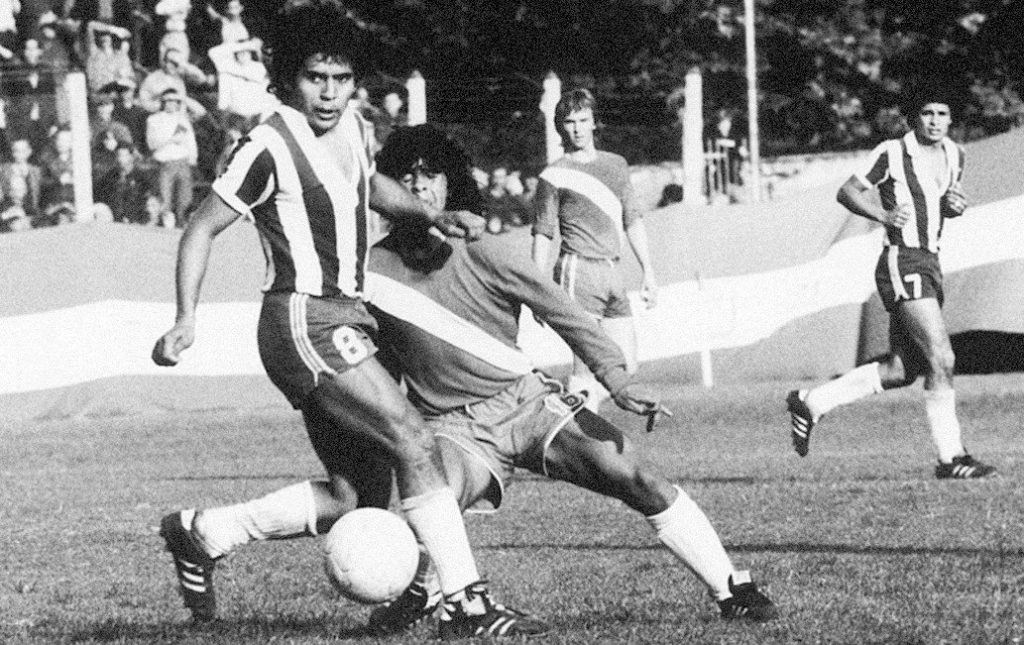
After five years with Argentinos Juniors where he scored 115 goals in 167 appearances, Maradona signed for Boca Juniors in 1981 and won the league title in the same year. He was a part of the Argentina team at the 1982 World Cup. But they were defeated in the second round by the eventual winners Italy. After the 1982 World Cup Maradona left Boca Juniors and signed for FC Barcelona (Yeah you read that right! He actually played for Barcelona like a certain Leo Messi) for a then world record fee of £5 million.
In 1983, he won the Copa del Rey and the Spanish Super Cup with Barcelona. Maradona also scored against Real Madrid in the El Clásico and received a standing ovation at the Santiago Bernabéu. A feat only two other Barcelona players (Ronaldinho in 2005 & Andres Iniesta in 2015) in the history have achieved. His career at Barcelona was a difficult one, and it imploded at the 1984 Copa del Rey Final against Athletic Bilbao, which at the end Maradona turned into a full-on brawl with opposition players.
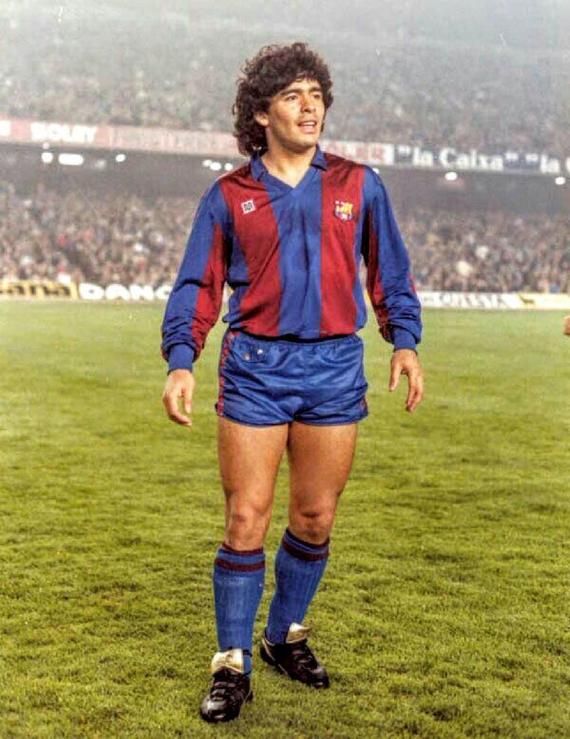
He left the Camp Nou after that season and arrived in Naples, Italy and signed for Napoli for another world record fee of £6.9 million. (FYI current world record transfer fee is £198 million) It is said that this transfer surprised and annoyed many back in the day as Napoli had never won a single league title before.
But Maradona being “Maradona” made the impossible happen as he delivered two league titles to the city of Naples. He did it in his own way submerging himself into the City and the fan base, and he is still considered as a God and the Greatest Symbol of Naples. Maradona’s Club Career might not get the spotlight it deserves due to many reasons, but it’s something that he deserves so much credit just as his career for the Argentinian National Team.
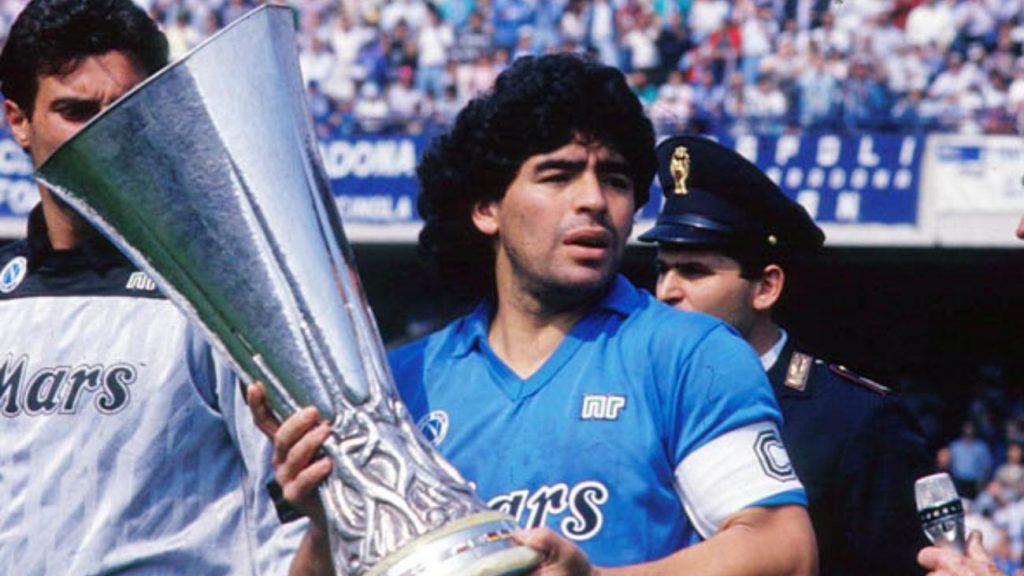
There is one tournament which comes to everyone’s mind when they hear the name “Maradona”. That’s the 1986 Football World Cup. This is where Maradona reached the absolute peak of his career. He captained Argentina national team to their second World Cup Trophy. He absolutely dominated the tournament scoring five goals & making five assists. In the final against West Germany Maradona gave the assist for the World Cup winning goal as Argentina won 3-2 at the Azteca Stadium in Mexico.
Even more than the final, there was one match where Maradona cemented his legacy as an absolute legend of the game. That was the Quarter final match against England where he scored two goals in four minutes as Argentina won 2-1. In those four minutes in front of more than 100,000 spectators Maradona showed both sides of the person he was.

In those four minutes Maradona encompassed the yin and yang of sports. It portrayed the drive, the hunger and the attitude of willing to anything to win at all costs even by cheating and the unimaginable, extraterritorial skill and ability that lifted him into something superhuman. The first goal, which will forever be known as the “Hand of God” is perhaps the most controversial goal of all time.
Maradona picks the ball up in midfield, just past the halfway mark and dribbles and glides past several English players and lays the ball off to his teammate Jorge Valdano and continues his run towards the goal, but Valdono mis controls it and the English midfielder Steve Hodge tries to clear the ball but ends up miscuing it towards the goal.
This brings the Goalkeeper Peter Shilton off his line to collect it and Maradona tries to get to the ball at the same time. It is fairly easy to understand that in a moment like that the Goalkeeper will always win the ball as he has the advantage of reaching it with his arms. But At this moment Maradona jumps towards the ball, extends his arm and punches the ball with his hand towards goal (which is technically handball).
But both the referee and the linesman don’t spot it and the goal was awarded to Argentina as Maradona celebrated like mad. Four minutes later, again Maradona picked the ball a long way away from the goal, dribbled past five English players, took the ball around the Goalkeeper and slotted it in with his left foot. (You can watch the goal down below. Don’t forget to pick up your jaw after watching) This goal was voted as the “Goal of the Century” by FIFA in 2002. Those four minutes clearly portraited Maradona and the player he was in a nutshell.
Maradona returned to captain the national team at the 1990 World cup. But he failed to go all the way and fell at the final hurdle when West Germany beat Argentina 1-0 at the Final. Maradona played only two matches in the following World Cup in 1994 as he failed a drug test during the tournament. That was the end of his career in the national team.
After leaving Napoli he later played for Sevilla before returning to Argentina and played for Newell’s Old Boys and Boca Juniors. Maradona retired from Football in 1997 at 37 years of age. Maradona eventually started a managerial career after his retirement from football. He started as the coach of the football club Mandiyú in 1994.
Then he went on to coach clubs like Racing Club & Al Wasl FC in Dubai. In 2008 Maradona proposed his candidacy as the coach of the Argentina National Team and was given the opportunity to lead the team to the 2010 Football World Cup. It was the period where Maradona was the coach of stars like Lionel Messi, Angel di Maria & Sergio Aguero. Argentina was eventually beaten by Germany in the Quarter Finals by 4-0. After the tournament AFA awarded the position to Daniel Passarella and Maradona was out of the picture.
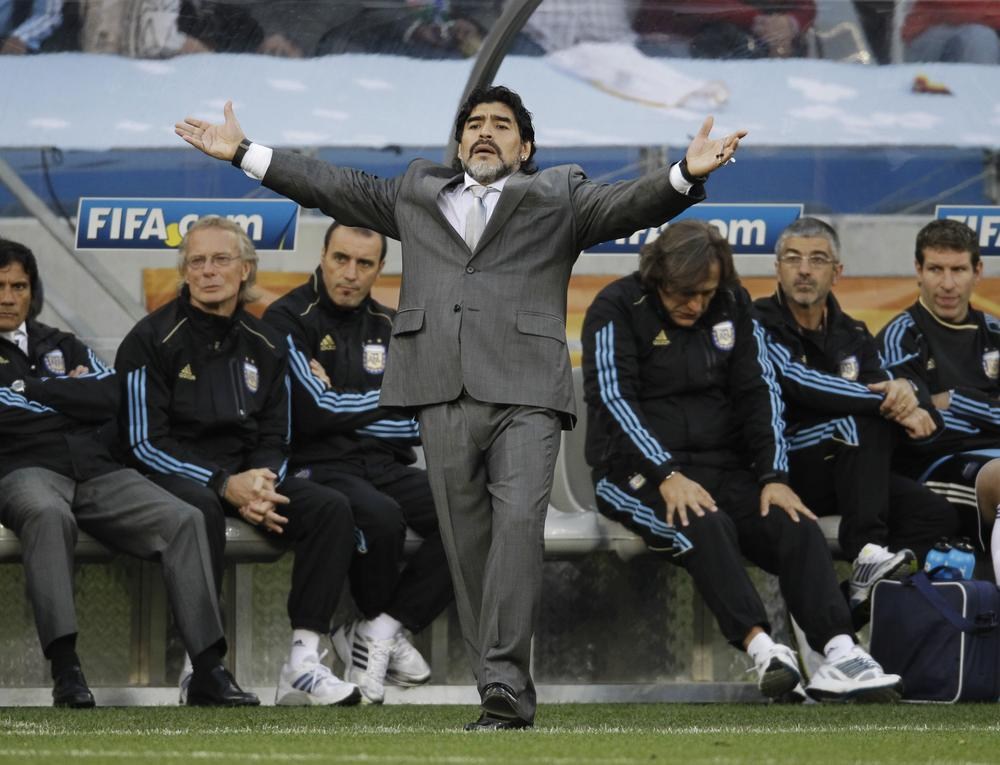
Maradona accomplished almost everything that a player could in his generation. Even after his retirement he managed to win many awards and recognitions. In 2000, he was recognized as one of the joint winners of the “FIFA Player of the Century” award alongside Pele. In 2018, he was ranked in first place by The Guardian in their list of the “Greatest Football Players in World Cup History”.
Even though he accomplished so much on the pitch, the same can’t be said about his life off the pitch. He was a known cocaine addict. He reportedly began using the drug in 1983 in Barcelona. We can only wonder what more he could’ve achieved if he never became an addict which severely affected his career as a footballer. He continued to have many health issues like obesity & hepatitis during his final years.
His most recent health issues came up in November 2020 when he had an emergency brain surgery, but he was released form the hospital after a successful surgery. On 25th November 2020 Maradona suffered a cardiac arrest at his home and passed away at the age of 60. The tragic news shocked the world. He was buried next to his parents in Buenos Aires. There were numerous tributes all around the world as everyone mourned the death of the Football icon.
Almost all the football matches observed a minute of silence before the start, including all the UEFA Champions League fixtures. The entire city of Naples joined in to mourn the passing of their symbol and the Stadio San Paolo, the home of Napoli FC was renamed as Stadio Diego Armando Maradona on 4th December 2020. Current football players paid their tributes on social media as well as on the pitch. One of the most iconic tributes came from Leo Messi as he put on a Newelll’s Old Boys Jersey that Maradona had worn during his time at the club.
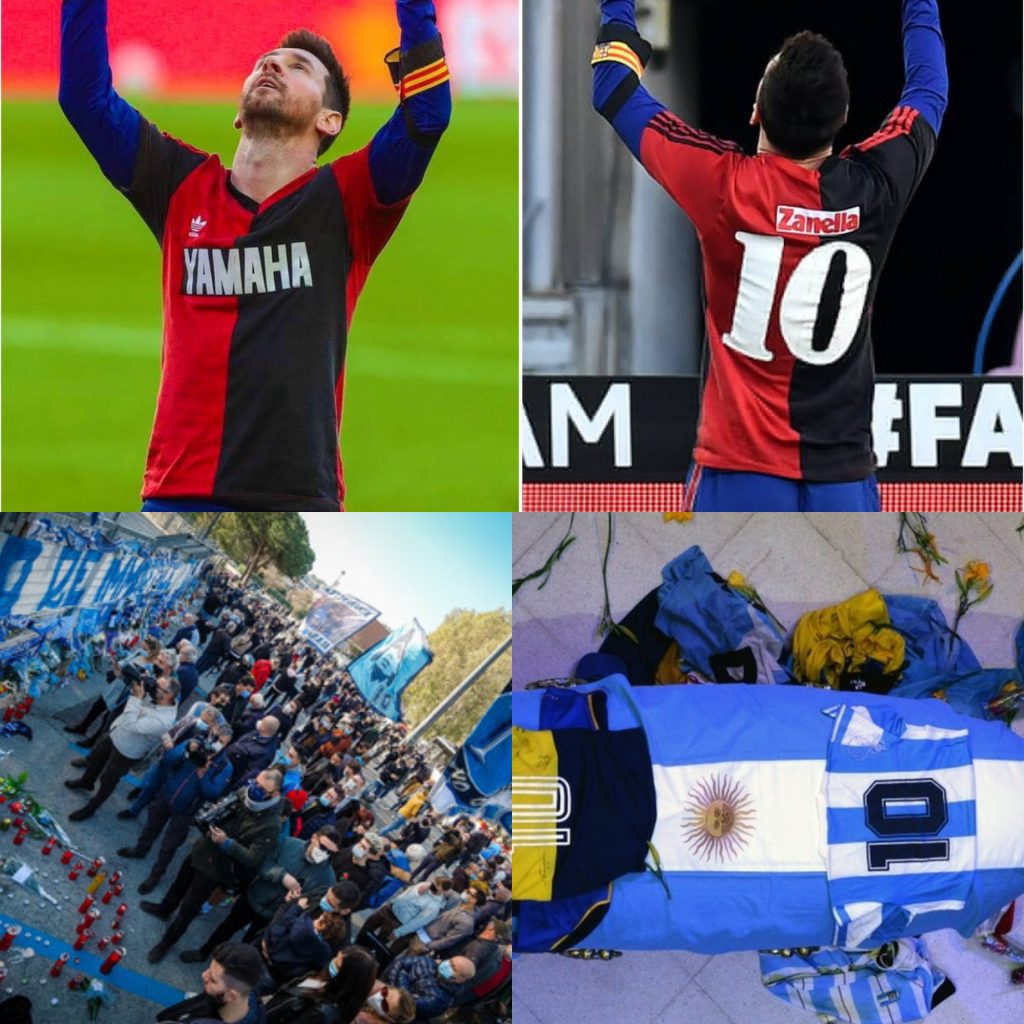
The world of Football lost one of its legends in this tragic year. There may be players like Lionel Messi who has surpassed Maradona as a player. Those two have many things in common. Both are icons of the game, Messi has even scored an almost identical goal to Maradona’s second goal against England. Incidentally Messi was present at the match when Maradona debuted for Newell’s Old Boys in 1993.
Messi might be the better player, Ronaldo & Pele might have scored more goals and there might be another Pele or another Ronaldo in the future. Someday someone might even outdo things all of them did on the football pitch. But even if someone manages to outdo Maradona on the pitch, there is absolutely no chance that anyone will emulate the Flawed Genius both on and off the pitch because his charisma and resonance off the pitch and his very own flaws can’t be matched by anyone ever again. There won’t be another Maradona. There can’t be one.
He will live forever in memory. Rest in Peace Diego Maradona!
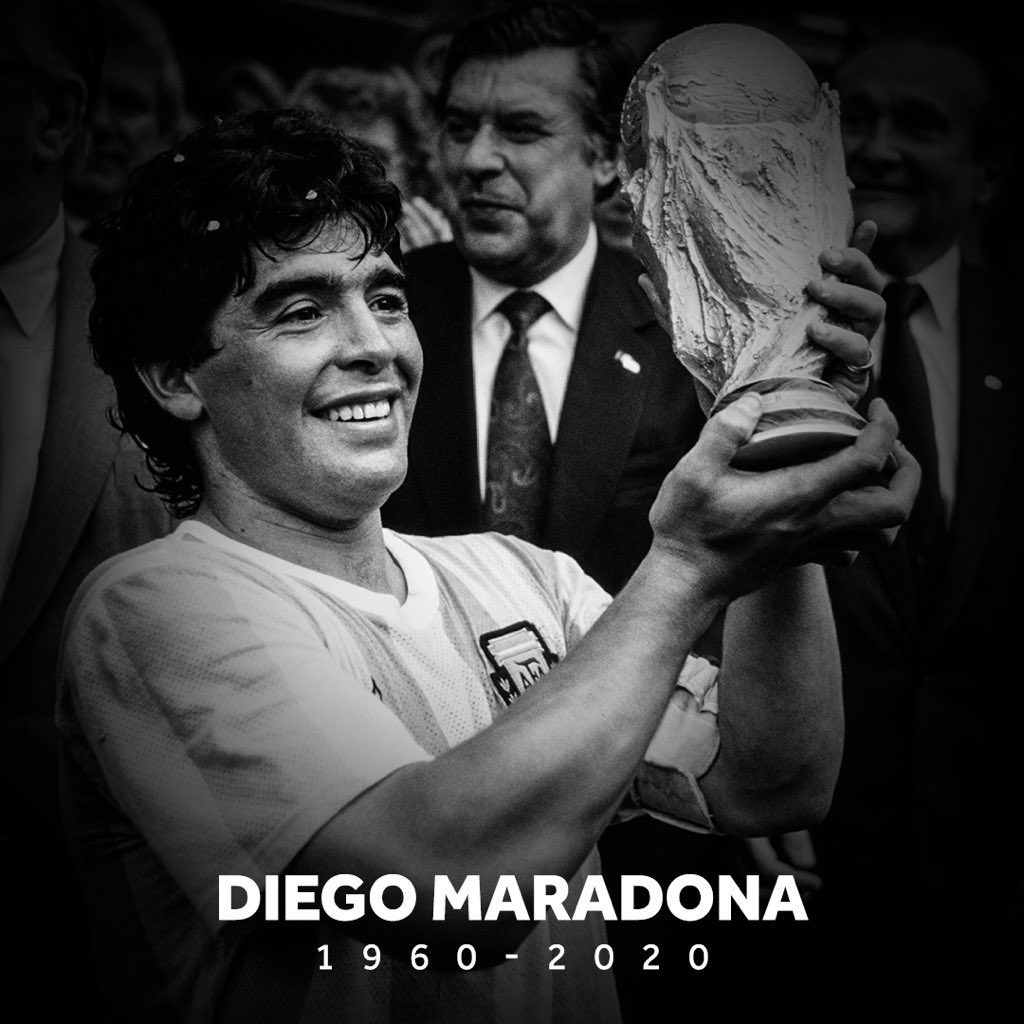
Written by Rtr. IPP Vidushith Jayasundara
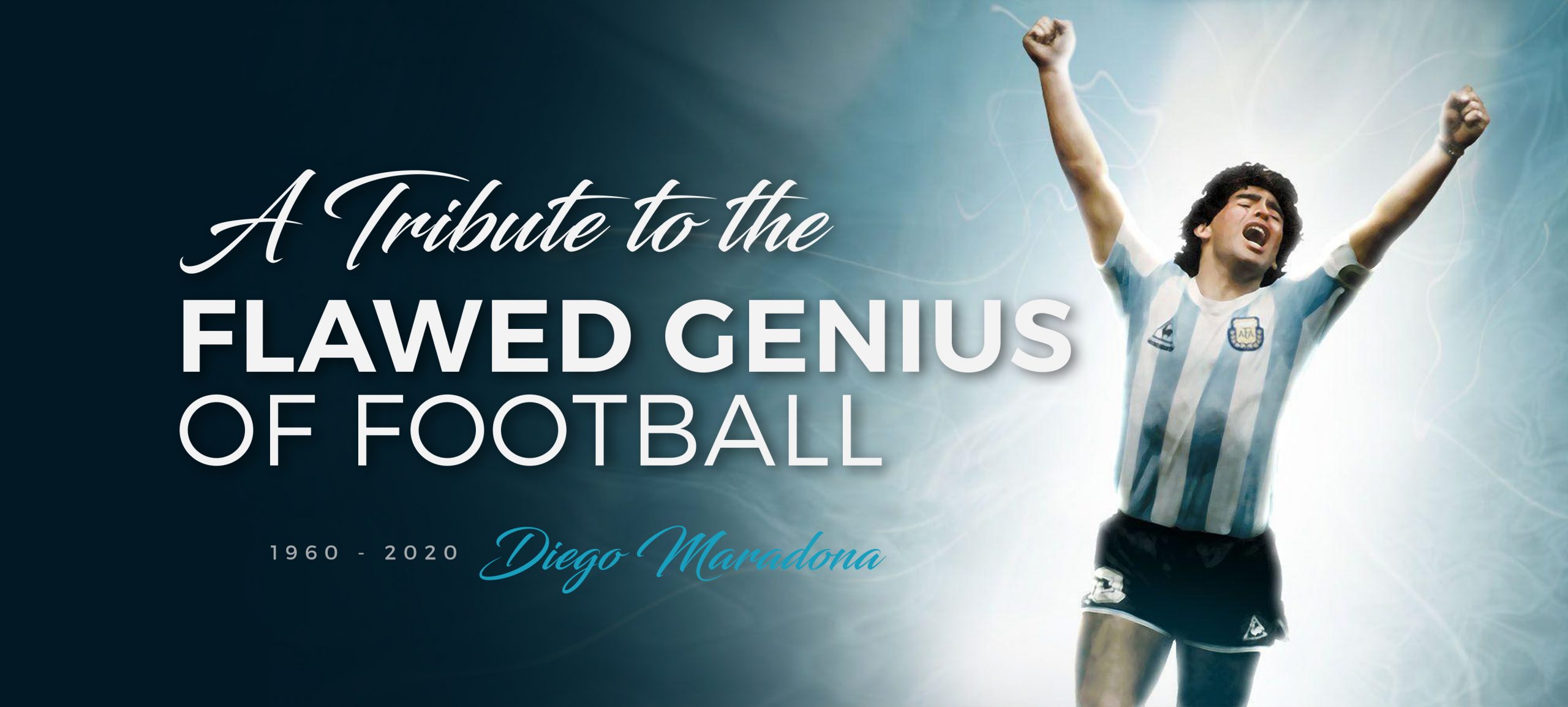

0 Comments